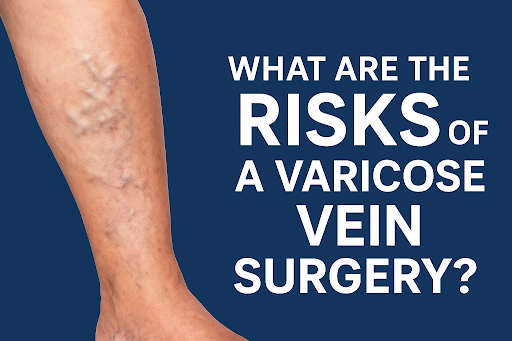Vein ablation has become an increasingly popular and effective treatment for varicose veins, providing relief from symptoms like pain, swelling, and unsightly vein appearance. As you recover from this minimally invasive procedure, it’s natural to wonder what changes your body will undergo and how you can best support your healing process. This article will guide you through what to expect after vein ablation, offering insights into the immediate aftermath, potential side effects, and the long-term benefits of the procedure.
Immediate Post-Procedure Experience
Immediately after vein ablation, most patients experience a sense of relief from the discomfort that varicose veins can cause. The procedure itself is typically quick, performed under local anesthesia, and you will likely be able to walk and resume normal activities soon after.
However, some common sensations may occur, such as:
- Mild Pain or Discomfort: It’s normal to feel some mild pain or discomfort in the treated area. This usually subsides within a few days and can be managed with over-the-counter pain relievers as recommended by your doctor.
- Bruising and Swelling: Bruising around the treated area is common, especially if larger veins were targeted. Swelling might also occur but should diminish over the first few days to weeks.
- Tightness or Pulling Sensation: Some patients report a tight or pulling sensation along the treated vein, which is a sign that the vein is closing and healing as expected.
Short-Term Recovery and Care
During the first week or two after vein ablation, your body will continue to heal, and the treated veins will gradually be absorbed by your body. During this period:
- Compression Stockings: Your doctor will likely advise you to wear compression stockings. These help to minimize swelling, promote proper blood flow, and support the treated veins during the healing process.
- Physical Activity: Light activities such as walking are encouraged and beneficial to promote circulation and reduce the risk of blood clots. However, avoid heavy lifting, vigorous exercise, or standing for extended periods, as these can increase pressure on the veins.
- Monitoring Symptoms: While some discomfort is normal, it’s important to monitor your symptoms. If you experience severe pain, significant swelling, or signs of infection (such as redness, warmth, or fever), contact your healthcare provider immediately.
Potential Side Effects and Complications
Vein ablation is generally safe, but as with any medical procedure, there are potential side effects and complications to be aware of:
- Skin Discoloration: Temporary changes in skin color, particularly a darker pigmentation along the treated vein, can occur. This usually fades over time but may persist in some cases.
- Nerve Irritation: Some patients may experience numbness or tingling near the treated area, particularly if the treated vein was close to a nerve. This is typically temporary and should resolve as the nerve heals.
- Blood Clots: Though rare, there is a small risk of developing deep vein thrombosis (DVT) after vein ablation. Symptoms include significant leg pain, swelling, and redness, and should be promptly evaluated by a healthcare provider.
Long-Term Results and Benefits
The long-term benefits of vein ablation are generally positive, with most patients experiencing a significant reduction in symptoms and an improved appearance of the treated area. Over the months following the procedure:
- Improved Circulation: As the treated veins are sealed off, blood is rerouted through healthier veins, improving overall circulation in your legs and reducing symptoms like heaviness and swelling.
- Symptom Relief: Most patients find that symptoms such as pain, throbbing, and leg fatigue diminish significantly, enhancing their quality of life.
- Aesthetic Improvements: The appearance of varicose veins typically improves as the treated veins are absorbed and fade over time, leaving you with smoother, more aesthetically pleasing legs.
Conclusion
Recovery after vein ablation is typically smooth, with most patients returning to their daily routines shortly after the procedure. By understanding what to expect and following your healthcare provider’s post-procedure care instructions, you can ensure a successful recovery and enjoy the long-term benefits of the treatment. If you have concerns or unusual symptoms during your recovery, don’t hesitate to contact your vein specialist for guidance. Taking these steps will help you make the most of your vein ablation experience, leading to healthier, more comfortable legs.








